A Needy Project Car: 1937 Ford Phaeton
One of the unique body styles that has left us is that of the phaeton. A phaeton is a carriage or early automobile with four doors and an open top. The word has its roots in Greek mythology. It was the name of Phaethon, the son of Helios the sun god. Helios pulled his Sun-chariot across the sky each day from East to West. Phaethon searched out his father and asked to drive the chariot for one day to prove his mettle. Despite trying to talk the boy out of such foolery, he allowed Phaethon to do so with disastrous results. Eventually, Zeus killed the boy with a lightning bolt, ending his disastrous ride. While the 1937 Ford phaeton seen here is mostly intact, it certainly hasn’t found itself in the favor of any gods. This gorgeous but rough automobile is an example of the second to last year of this body style at Ford and a chance to own and restore a quite rare open car.
You might look at this car and wonder what separates a phaeton from the more commonly seen convertible sedan body style. The biggest difference is that roll-up windows keep the weather out of your convertible sedan. Phaetons used side curtains to protect passengers from the elements, much like roadsters. The way they were installed is rather unique. Once the convertible top is up and secured, you would pull out a bag of metal rods called stanchions that fit into holes in the door. You would walk around the car putting the stanchions in their respective places. Then, you would pull the individual side curtains and connectors out of a sleeved holder stored inside the car. You once again walked around the car sliding the side curtains down over the stanchions into the sleeves sewn into the side curtains. Some of the connectors and side curtains would snap together to make the car relatively weather-tight.
At least at Ford, phaetons started as rather simple vehicles at the lower end of the price spectrum. While the touring cars of the Model T era were essentially phaetons, the name was not used by Ford until the arrival of the Model A in 1928. Phaeton buyers were usually those who needed the room of a four-door car but wanted to save some money. A few of the drawbacks were having to see out of the clear plastic inserts in the side curtains, a lack of structural rigidity, meager weather protection, and the amount of time it took to button one up. There are reports of some being used for patrol cars in Northeast states in 1935. As you can imagine, it was probably not a pleasant experience to drive a phaeton in the heavy rain or frigid conditions.
In 1935, Ford introduced a convertible sedan into the lineup. 1937 brought a new convertible sedan body along with the restyling for that year. It stayed there until 1939, and the bodies were used by Mercury in 1940. These cars were more substantial than a phaeton and had roll-up windows. In 1937, the phaeton body style managed to hold on with the new restyle. The difference was that the bodies of both the phaeton and the convertible sedan were the same except for the tops of the doors. The number of people who felt they needed a four-door convertible was dwindling, so sales of both body styles continued to go down. Despite Ford’s habit at the time of offering body styles that they surely didn’t sell enough of to make any money: the phaeton was still available in 1938 for the last time.
The 1937 Ford phaeton you see here is one of just 3,723 built that year. The seller tells us the car’s condition can be explained by it being an abandoned restoration from several years ago. As you can tell from the pictures, there are some issues with corrosion and likely some missing parts. We catch a glimpse of a few parts inside the car, but there are no specific pictures of the interior to decide what is there. We are told that there is corrosion damage on the floors in many places. Sadly, we are not given detailed pictures to determine if the car can be patched up or if it requires new pans.
Under the hood sits a mostly correct 1937 Ford Flathead V-8. The seller tells us that it does not run, but the three-speed manual transmission is still there as well. Underneath, the frame has just surface rust and they believe a new gas tank has been installed. The fact that the car wears the correct wheels for 1937 tells us that the car is still stopped by mechanical brakes. Many Fords of this era were converted to hydraulic brakes. However, the drums required by the hydraulic brake system would prevent the use of the correct wheels.
In all, this car looks to be solid enough to be restored. There is a lot of metal work to do on the phaeton-specific body from the cowl back. The rest of the car from the front end to the frame and all of the mechanicals are the same as any other 1937 Ford. It would be a costly project, but a doable one. Hopefully, it goes to someone who will see the project through. Phaetons are unique vehicles. For all their idiosyncrasies, they are also some of the most beautiful cars ever built.
If you think you have what it takes to restore this 1937 Ford phaeton, then it is for sale on eBay Classifieds in Morgantown, Pennsylvania. The asking price for this interesting drop-top is $6,900.
Auctions Ending Soon
 2006 Ford Mustang Saleen S281 SCBid Now19 hours$15,000
2006 Ford Mustang Saleen S281 SCBid Now19 hours$15,000
 2002 Subaru Impreza WRXBid Now3 days$100
2002 Subaru Impreza WRXBid Now3 days$100
 1975 Chevrolet Corvette ConvertibleBid Now3 days$3,000
1975 Chevrolet Corvette ConvertibleBid Now3 days$3,000
 1964 Ford F-100 Camper CustomBid Now3 days$2,000
1964 Ford F-100 Camper CustomBid Now3 days$2,000
 2006 Jeep Wrangler SportBid Now5 days$10,500
2006 Jeep Wrangler SportBid Now5 days$10,500
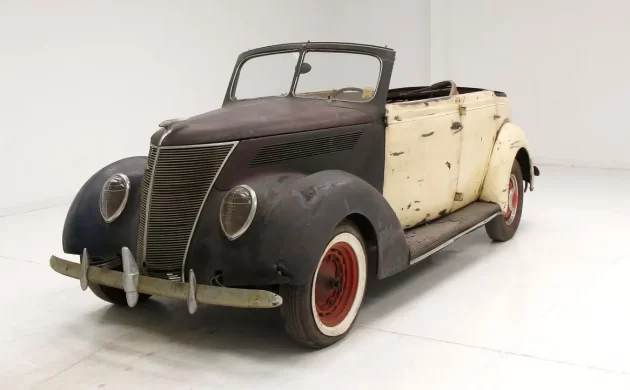

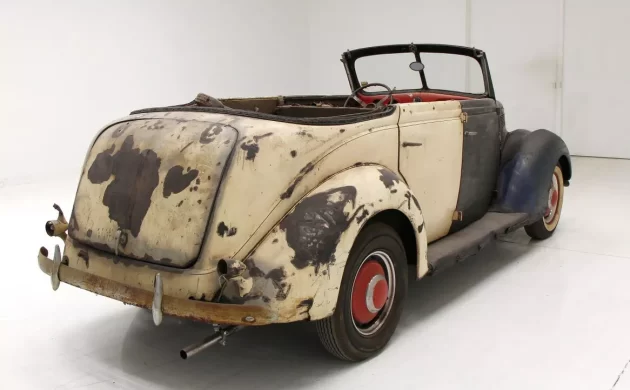
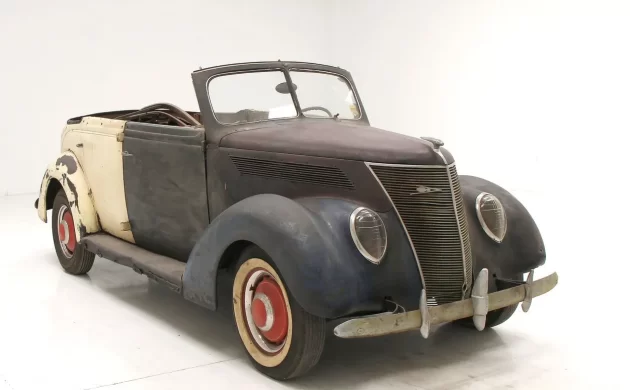
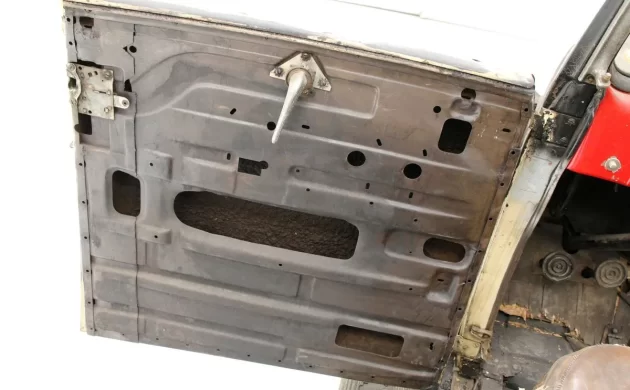
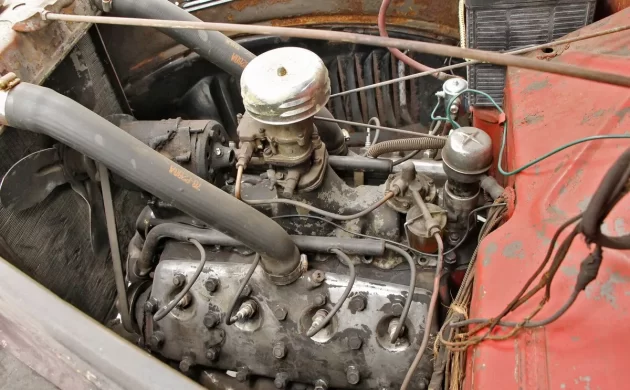

Comments
Beautiful text. Beautiful model.
Hard to see one these days.
In the final scene of the film Casa Blanca, a car with this type of body appears. Maybe a 1940 Cadillac. I know someone around here could help.
Its a 1940 Buick , and amazingly the car from the movie still exists !
That would be a cool project. Heck, clean it up and have fun until winter
Front end is great but the back end is a little frumpy.
These look fantastic when restored to stock. Great buy !
“The fact that the car wears the correct wheels for 1937 tells us that the car is still stopped by mechanical brakes. Many Fords of this era were converted to hydraulic brakes. However, the drums required by the hydraulic brake system would prevent the use of the correct wheels.”
This is not entirely correct. The ’37 drums could be used with ’39 to ’48 backing plates to convert to hydraulic brakes as they are the same dimensions as the later drums. That would allow the stock “wide-five” wheels to be used with hydraulic brakes. This has been done countless times by hotrodders and restorers to modernize old Fords.
I’d love to have this one. It’s like the one my early relatives ran moonshine in across the border into Canada back in the 40’s.
You’re absolutely right when you stated “Phaetons are unique vehicles. For all their idiosyncrasies, they are also some of the most beautiful cars ever built.” But I have found they have a limited appeal now. I have a ’29 Phaeton that has proven to be a tough sell. Few people seem to want them now.
Jeff I really enjoyed your article as I have spent a lot of time trying to explain this terminology to various car enthusiasts. I agree with everything you said except for some minor things.,I am also speaking from memory and what I , was told and read. Also for clarity ,we are only talking about Fords from 1932 to 1940. The basic thing is Roadsters and Phaetons had side curtains all others that were considered “open cars” had glass windows, another big difference was the windshield posts and cowl ,there was no place for glass. The last Roadster and Phaeton was 1937. In 1938 and 1939 there were Convertible Sedans, in 1940 only convertibles. When I look at the car in your article I think it is a convertible Sedan ,because of the cowl, if it was a Phaeton it would have windshield posts. For what I know or think something is off about that car. Also as a side bar I am 81 years old and have been obsessed with old Fords forever and I have personally never seen a 37 Ford Phaeton even though they supposedly made them. Jeff, please take my remarks as they are intended I think you did a great job and I am just going of my experiences and we might be the only two guys on the planet that find this worth talking about.
Joe, actually the ’37 Phaeton did not have windshield stanchions like the ’36 and prior Roadsters and Phaetons. Here’s an example: https://cars.bonhams.com/auction/21223/lot/544/1937-ford-model-78-deluxe-phaeton-chassis-no-3483357/
I agree with Joe. That one is a convertible sedan. You can see the chrome window frames. Still a cool car that went cheap.
If you look at the car in my write-up carefully, you can see the spots in the door where the side curtains snapped. The picture of the door shows the cap on the top and you can look inside the door itself. Notice no window regulator.
Thanks for the comments.
Thank you for the kind words and expertise. I enjoy reading the comments and am appreciative of the readers here who have a vast knowledge of these cars chiming in. It helps me become a better writer and I learn a lot from you folks.
I think the confusion stems from Ford doing Ford things. My belief is that the convertible sedan and phaeton bodies are the same for 1937 and 1936. The only major difference is that the doors were capped and drilled so that side curtains could be installed. Why would Ford waste the time, money, and energy to make the phaeton available when a convertible sedan is better in every way except for looks? Because Ford back then marched to its own drummer. Oftentimes that drummer was old Henry himself. When you sit back and wonder why Ford was on its rear end financially during the war, remember decisions like this.
The pictures of this 1938 phaeton may help: https://www.autobarnclassiccars.com/vehicles/1334/1938-ford-phaeton
If I got this I’d…oh, nevermind. I’ve always liked the 37 Ford’s.
I was gonna try to get this one, but these 2 guys, Archie and Jughead outbid me every time.
TomD, Thanks for the feedback. BUT, I think your wrong, I know that they are calling this a Phaeton. However. look closely at the pictures of the doors. I don’t mean to say Bonham’s is wrong, but they are. This is a Convertible Sedan. If you look closely at the pictures of the doors you can see handle’s for the windows you can also see on the brace between the doors there is a hole for the filler piece to have the channel for the windows. As I said in my post I have been into early V-8 Fords for a long Time. I still have my 34 Ford Coupe I bought in 1965 when I was 19. I do know I have seen 37 Roadsters and Convertible Sedans. I have never seen a 37 Phaeton in person ,not sure I have even seen a picture. I have some long time friends I could ask, they should know. I don’t ever remember talking about it with anyone ,other than to say how rare they are. It has me thinking I have some books on early V-8’s that might answer this question.
I’m getting a Lumpy Rutherford vibe.